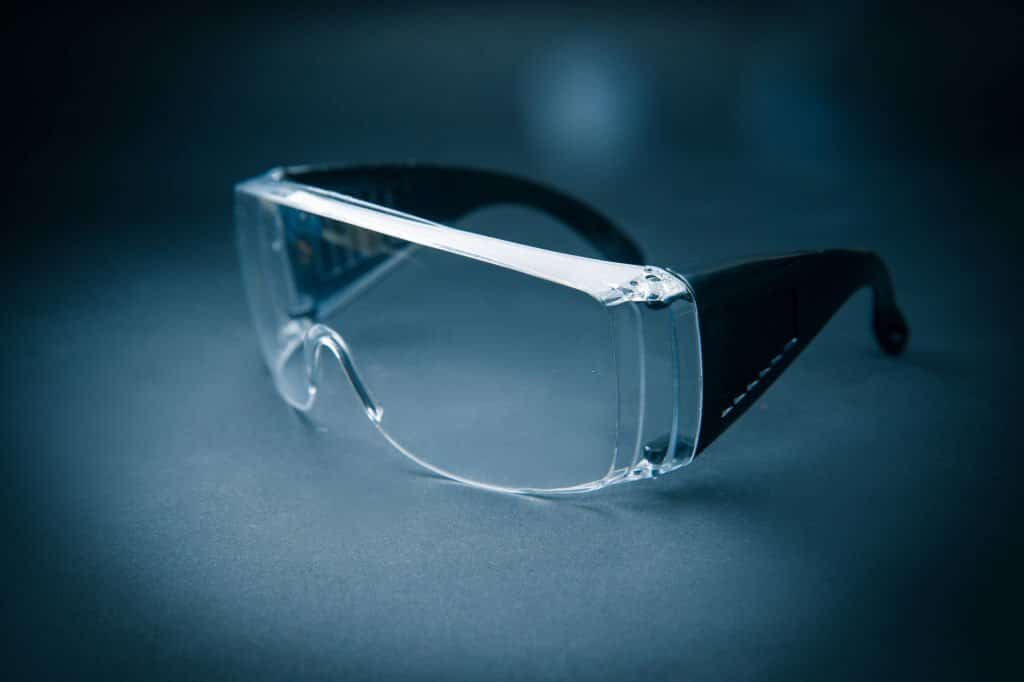
TEXAS MOTORCYCLE LAWS
In Texas, state laws regulate motorcycle accidents, so understanding them is imperative.
Most Texans enjoy motorcycles as a hobby and pastime, not just as a mode of transportation. Although motorcycles are an enjoyable way to travel and enjoy a pleasant day on the road, it’s important for Texans to understand state motorcycle laws. As a result of knowing these laws, riders are safe on the road and don’t have to worry about fines or legal problems caused by parking or mechanical problems.
All motorcycles must have brakes, reflectors, headlights, and taillights, as well as other typical parts of a vehicle. A motorcyclist should have a registered motorcycle, the rider must have the appropriate motorcycle license. There are some states that impose noise restrictions on the exhaust and muffler decibels, but Texas does not.
Licensing:

In Texas, motorcycle riders must have a Class M license. After passing a written and driving test, you will be able to obtain this license by taking a safety course approved by the Texas Department of Public Safety. In order to receive a motorcycle license, applicants must pass both a written test and a road test covering traffic laws for motorcycles. It does not require, an out-of-state motorcycle license holder to show proof of completion of a course.
If an applicant (aged 16 or older) has completed a Basic Motorcycle Operator Training Course approved by the Department of Public Safety and has a Class A, B, or C license that is unrestricted (not an instructional permit), they can present an MSB-8 completion certificate or a completion card from a course that meets the Motorcycle Safety Foundation curriculum requirements.
The Helmet Law:

Motorcyclists under the age of 21 are required to wear helmets while operating a motorcycle in Texas. Helmets are still required for riders over 21 unless they meet one of the following exceptions: 1) completing a state-approved motorcycle safety course, or 2) having at least $10,000 in medical insurance that will cover their healthcare costs if they are ever involved in an accident.
Texas police cannot stop or detain any rider solely to verify whether they have completed a training course or have medical insurance.
In spite of the fact that riders over the age of 21 are allowed to choose whether to wear a helmet, helmets have been proven to save lives. Riding with a helmet approved by the Department of Transportation is a good idea.
Lane Splitting According to Texas Laws:
“Lane splitting,” or moving between lanes of traffic to pass another vehicle, is a common practice among motorcyclists. In certain situations – namely, when riders split lanes with larger vehicles or ride at high speeds – this practice can be dangerous.
Motorcyclists who violated the law by lane-splitting may have difficulty recovering damages after a motorcycle accident.
Directly following another rider in the same lane is illegal. You have nowhere to go if you need to maneuver to avoid a car or hazard on the road. It is, however, legal for motorcycle riders to ride in a staggered formation, which helps them to be seen by other drivers.
A motorcycle operator’s and passenger’s safety is a top priority for the American Motorcyclist Association. All types of public roadways present challenges for motorcyclists, and they are constantly on the lookout for hazardous conditions.
It is perhaps the most dangerous situation for any motorcyclist to be stuck in congested traffic, where several vehicles are stopped and going, distracted and inattentive drivers are operating vehicles, and environmental factors increase the risk of physical contact.
It is possible to reduce front- and rear-end collisions for motorcycle riders by reducing their exposure to vehicles that accelerate and decelerate frequently on congested roadways. The results of a 2014 study conducted in California support this assertion by showing that motorcycle riders who lane split responsibly are less likely to be rear-ended, suffered head injuries, or died in an accident.
The motorcyclist is also more conspicuous because he is moving relative to other traffic, and his fatigue is reduced due to constant shifting and braking in stop-and-go traffic. Air-cooled engines have a reduced risk of damage; motorcyclists spend fewer hours in traffic, so they are less exposed to ambient heat and car exhaust.
Passengers | Texas Motorcycle Laws:

A motorcycle cannot transport children under the age of five as passengers. They may, however, ride in a sidecar. Under-21-year-olds and children older than five must wear helmets, and motorcycles must have permanent passenger seats. Motorcycle operators cannot carry passengers without permanent passenger seats.
Insurance:
Motorcyclists are required to carry proof of liability insurance that will pay for at least $30,000 per person injured in an accident and $60,000 for multiple people injured in an accident, along with $25,000 to cover property damage. Whenever registering a motorcycle, inspecting it, or obtaining a Texas Official Driver’s License, you must provide proof of insurance.
Registration:
It is the responsibility of every rider to register their motorcycles with their respective County Tax-Assessor Collector, just like a car. After registration is complete, the license plate must be attached with a registration sticker.
Inspection:
In Texas, motorcycles must be inspected annually at an Official Motor Vehicle Inspection Station. The state of Texas requires all vehicles, including motorcycles, to receive a yearly inspection at an official motor vehicle inspection station. On bikes that pass inspection, the certificate of completion must be displayed near the rear license plate. Certificates are valid for one year from the date of inspection.
Parking:
The same parking rules apply to motorcycles as they do to passenger vehicles.. Parking in striped areas, near red curbs, or on sidewalks is illegal without a disabled placard or license plate.
As a result of the fact that motorcycles are smaller than passenger cars, some motorcycle riders feel it is safe for them to park in the striped areas close to handicapped parking spaces or other similar areas of the pavement which have a sign saying “Do Not Stop”. This is illegal. The same applies to parking motorcycles on sidewalks.
Equipment to carry | Texas Motorcycle Laws:
In Texas, motorcyclists should equip the following:
- Identification number of the vehicle
- Lighting source: headlamps
- Lamp at the tail
- The stop lamp
- Lamp for license plates
- System for exhausting
- The horn
- Mirrors
- Steering
- The brakes
- A tire
- A red reflector located at the rear
- Assembly of wheels
Additionally, there are requirements for passengers. There must at least be a seat and pegs or footrests. Also, the passenger on a motorcycle must also be at least five years old.
Headwear/Eyewear:

Motorcycle windshields alone do not provide adequate protection. Glasses with shatterproof lenses protect the eyes, but they do not stop your eyes from watering. Motorcycle riders should wear goggles that block wind and protect their eyes. Motorcyclist eyewear should be shatterproof, securely fashioned, optically clear, and not block peripheral vision.
Face shields are another protective measure for motorcyclists. Researchers have found that wearing face shields reduces facial injuries, even from rocks and insects. Ideally, the face shield is securely attached to the helmet, scratch-free, and able to withstand impacts and penetrations.
Protective Gear to carry:
When riding a motorcycle, protection does not end with a helmet. Wearing fully protective clothing is by far the most effective method of protecting against motorcycle injuries, as well as protecting one from the risks associated with driving a motorcycle every day. By wearing protective clothing, you can avoid sunburn, windburn, rain, dehydration, cold, and exposure to parts of the motorcycle. Some of the protective gear are:
- A low-heeled shoe should cover the ankle without dangling laces or rings. footwear offer great grip on Roads and footpegs.
- The gloves should protect the hands from cuts and bruises, blisters, cold, and wind, as well as improve grip for better control.
- Wearing bright-colored clothing increases visibility and can resist abrasions while fitting comfortably in witching bindings.
- In rainy weather, riders must carry rain suits.
- Goggles or shatterproof eyewear
- Face shields
- Fully protective clothing, including a jacket, riding pants, or riding suits
- Elbow/shin/knee guards
- Earplugs
Motorcycle injuries:
Motorcycle collisions often result in serious injuries. Pain can range from crushed bones to torn ligaments.
There is a lot of ignorance about how these accidents really occur, which makes it even worse. An automobile may pull up directly in front of a motorcycle, for instance. It may be possible for other vehicles to stop. As a motorcyclist, slamming on brakes may be dangerous, so laying down the bike is the better choice – a terrible option for anyone.
As a result, in some serious or even fatal accidents, there may have been no contact between the motorcycle and other vehicles. No matter what the situation, motorcyclists have the right to seek compensation from motor vehicle operators who are at fault. Examples include:
- Accident-related medical expenses, including past, current, and future costs
- An amount of money to compensate for pain and suffering
- An emotional distress payment
- Amount of damage to account for disfigurement
- Injury-related income loss, along with future earnings reduced
- The cost of repairing or replacing the damaged motorcycle
Drivers often blame motorcyclists for accidents, and their insurance companies, claim they broke the law and were driving recklessly.
Conclusion | Latest Texas Motorcycle Laws:
Motorcyclists need to know the rules of the road to prevent motorcycle injuries. It is easy for motorcycle riders to overlook the increased risk of injury and death when they are considering the excitement and thrill of riding a motorcycle. As a result of their size and lack of outer protection, motorcycles are simply a greater risk if you don’t wear proper protective gear, follow the rules of the road, and ensure that every part of the motorcycle is functioning legally.
FAQs | Latest Texas Motorcycle Laws
To ride a motorcycle on a public highway in Texas, you must have a Class M license. The applicant must be 16 years or older and have completed one of the Department of Public Safety’s Basic Motorcycle Operator Training Courses.
Texas has not legalized lane splitting.
According to the 2015 Texas transportation code, vehicles must drive within a single lane (not between.)
Unless you live in Hawaii, riding on the shoulder is not legal. Most of the United States prohibits using the shoulder during stop-and-go rush hour traffic.
Anyone under 21 who rides a motorcycle in Texas must wear a helmet. Drivers and passengers under the age of 21 who are riding motorcycles are included in this category.
Driving without a motorcycle endorsement could cost you around $195 in Texas. Those without motorcycle insurance could face fines between $260 and $470
